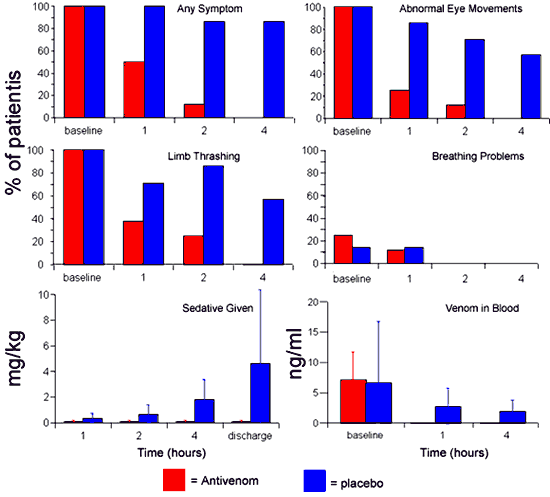Neuroscience For Kids
Taking the Sting Out of Scorpion Venom
May 26, 2009

Scorpion stings hurt and can be life threatening, especially for young children. Neurotoxins and other chemicals in scorpion venom can cause movement problems, visual disturbances, and breathing difficulties. More than 250,000 people are stung by scorpions in North America each year. In Arizona, approximately 200 people have severe reactions to scorpion stings.
Unfortunately, there is no government-approved therapy for scorpion stings. An antivenom was developed in 1965, but it has not been made since 1999 because its effectiveness was not certain. Researchers are working on a new scorpion anti-venom and the results are encouraging.
In this search for a new scorpion anti-venom, researchers studied 15 children who were stung by scorpions and admitted to a pediatric intensive care unit. Of the 15 children, eight received the antivenom and seven received a placebo. The researchers and the children did not know who received the antivenom or who received the placebo until after the study was finished.
Results
Children who received the antivenom recovered faster than children who received the placebo. All eight children were free of symptoms four hours after they received the antivenom; six of the seven children who received the placebo still showed some problems four hours later. Abnormal eye movements and limb thrashing cleared up faster in those children who received the antivenom compared to those who received the placebo. Children who received the antivenom also required less sedation and had less venom in their blood than those children who did not receive the antivenom.

Although this study involved only 15 cases, the data show that scorpion antivenom effectively speeds the recovery of children who have been stung by a scorpion. If emergency rooms had this new medicine, then the danger of severe reactions and long term hospital care may be reduced.
Reference and further information:
- Boyer, L.V., Theodorou, A.A., Berg, R.A., Mallie, J., Arizona Envenomation Investigators, Chávez-Mendez, A., García-Ubbelohde, W., Hardiman, S., Alagon, A., Antivenom for critically ill children with neurotoxicity from scorpion stings. N Engl J Med., 360:2090-2098, 2009.
- Neurotoxins - Neuroscience for Kids
Copyright © 1996-2009, Eric H. Chudler, University of Washington
